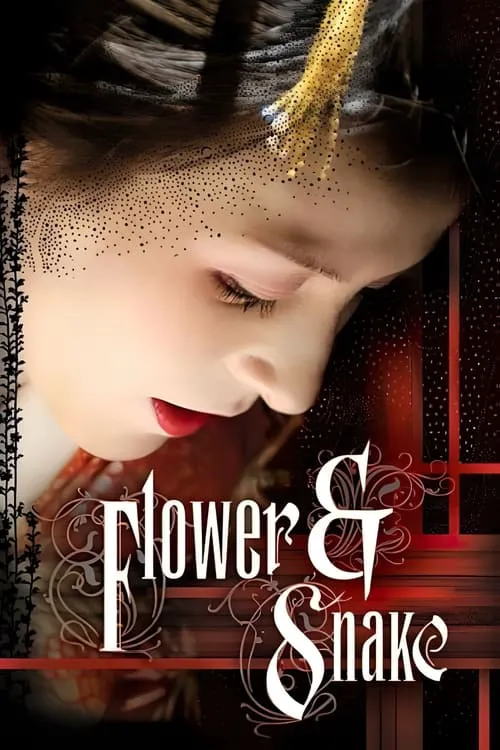Flower & Snake

Plot
In the 1974 Japanese film 'Flower & Snake,' director Shôji Kanemune expertly weaves a dark and provocative tale of seduction, submission, and the intricate dynamics of power between two men and a strong-willed woman. Set against the backdrop of a decaying post-war Japan, the story centers around Tatsuhiko Shirauma, a wealthy and influential businessman who has accumulated a staggering debt to a ruthless crime lord, Ōkōchi. Desperate to avoid reprisal, Shirauma makes a Faustian bargain, trading his glamorous wife, Emiko, to Ōkōchi, believing that the old man's frailty and age will render him harmless. This assumption, however, proves misguided as Ōkōchi proves to be a cunning and relentless predator, exploiting Emiko's striking beauty and dance skills. Initially, Emiko is showcased as a free-spirited performer, captivating the audience with her elegance and poise. However, under Ōkōchi's twisted tutelage, she is gradually transformed into a submissive sex slave, surrendering to the cruel whims of her master. As Emiko succumbs to the dark allure of bondage and pain, she sheds her former identity, becoming an object for Ōkōchi's indulgence. Meanwhile, Shirauma becomes increasingly enthralled by the S&M spectacle, watching with morbid fascination as Emiko is publicly subjected to humiliation and degradation. His voyeuristic fixation serves as a poignant commentary on the objectification of women and the societal normalization of patriarchal dominance. As the narrative unfolds, Emiko finds herself caught in a web of exploitation, oscillating between surrender and resistance. Her experiences serve as a searing indictment of the commodification of the body, the perversion of power, and the devastating consequences of objectification. Throughout the film, Kanemune's direction deftly navigates the thin line between titillation and transgression, creating a thought-provoking exploration of the psyche of those caught within the S&M underworld. By juxtaposing the squalid, cramped settings of the underground sex show with the lavish, if crumbling, opulence of the Shiraumas' mansion, the director highlights the stark contrasts between luxury and degradation. In 'Flower & Snake,' Emiko's narrative trajectory serves as a harrowing metaphor for the erasure of individual identity, as she is stripped of her autonomy and reduced to an object of male desire. This descent into submission serves as a commentary on the societal pressures placed on women, conditioning them to acquiesce to the expectations of those in power. One of the most striking aspects of the film is its portrayal of Emiko's psychological transformation. Initially proud and fiery, she gradually yields to the manipulations of Ōkōchi, internalizing the shame and humiliation inflicted upon her. As she succumbs to the darkness, her demeanor changes, mirroring the devastating impact of objectification on the human psyche. The performances in 'Flower & Snake' are noteworthy, particularly that of Naomi Shiraishi, who brings a commanding presence to the role of Emiko. Her portrayal captures the character's tragic arc, from a proud and independent woman to a defeated, submissive sex slave. The cinematography, handled by Kazuo Miyagawa, adds to the film's sense of realism, using a stark, unromanticized aesthetic to underscore the bleakness of the underworld depicted. This cinematic approach, coupled with the director's deliberate pacing, creates an atmosphere of unflinching voyeurism, immersing the viewer in the claustrophobic, dehumanizing world of the S&M show. Ultimately, 'Flower & Snake' is a thought-provoking, if discomforting, portrayal of the darker aspects of human nature. Through its exploration of the dynamics of power, objectification, and exploitation, the film serves as a scathing critique of societal norms and the devastating consequences of a culture that normalizes the subjugation of women.
Reviews
Recommendations




